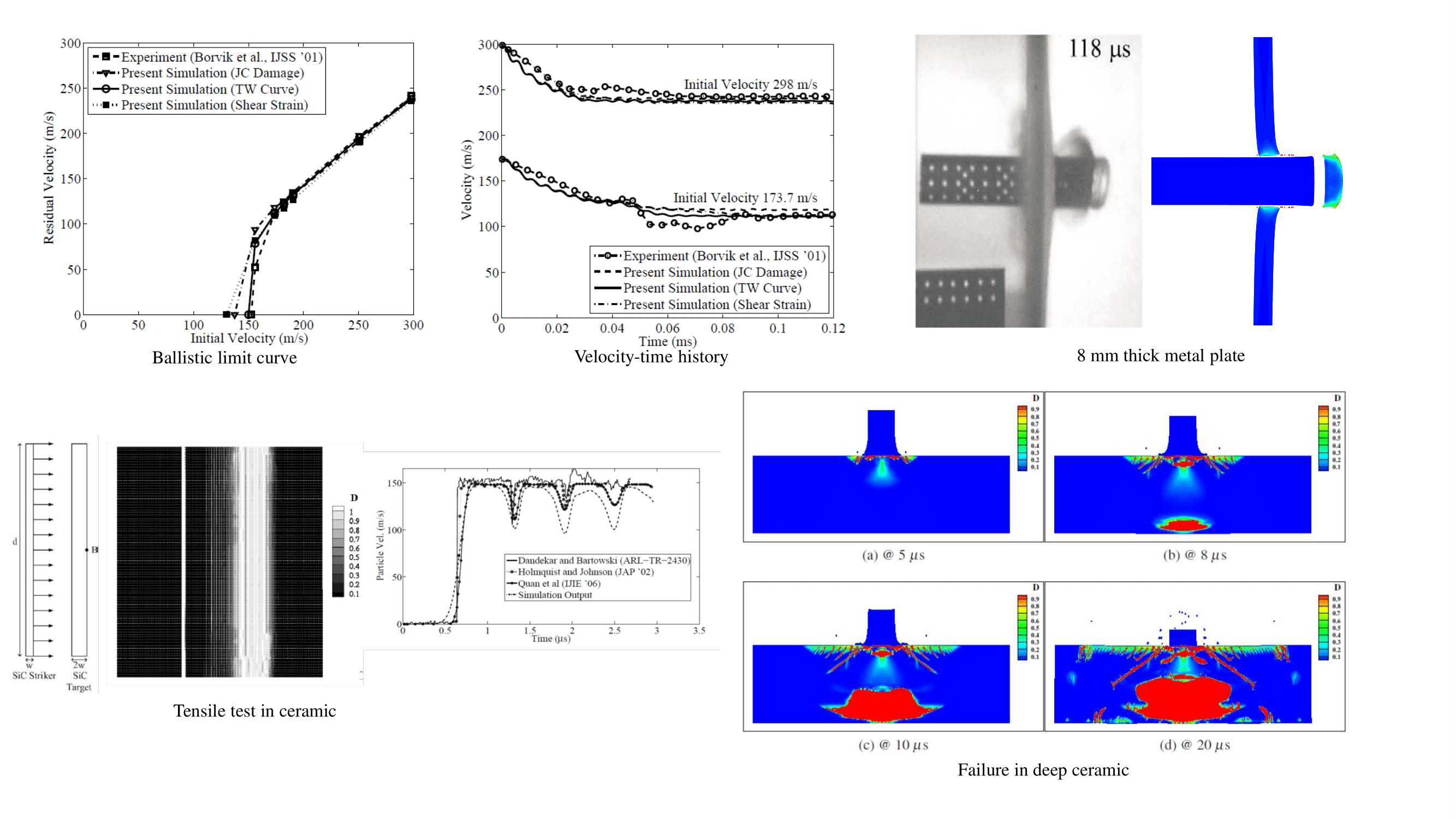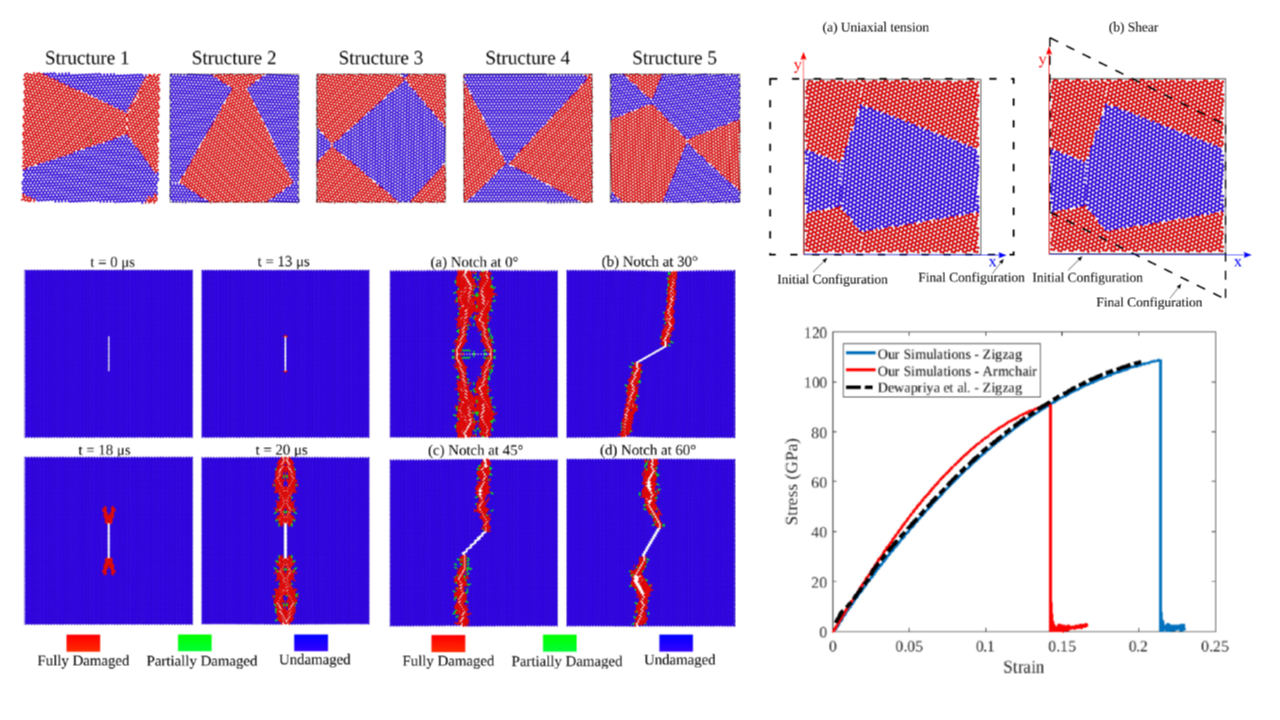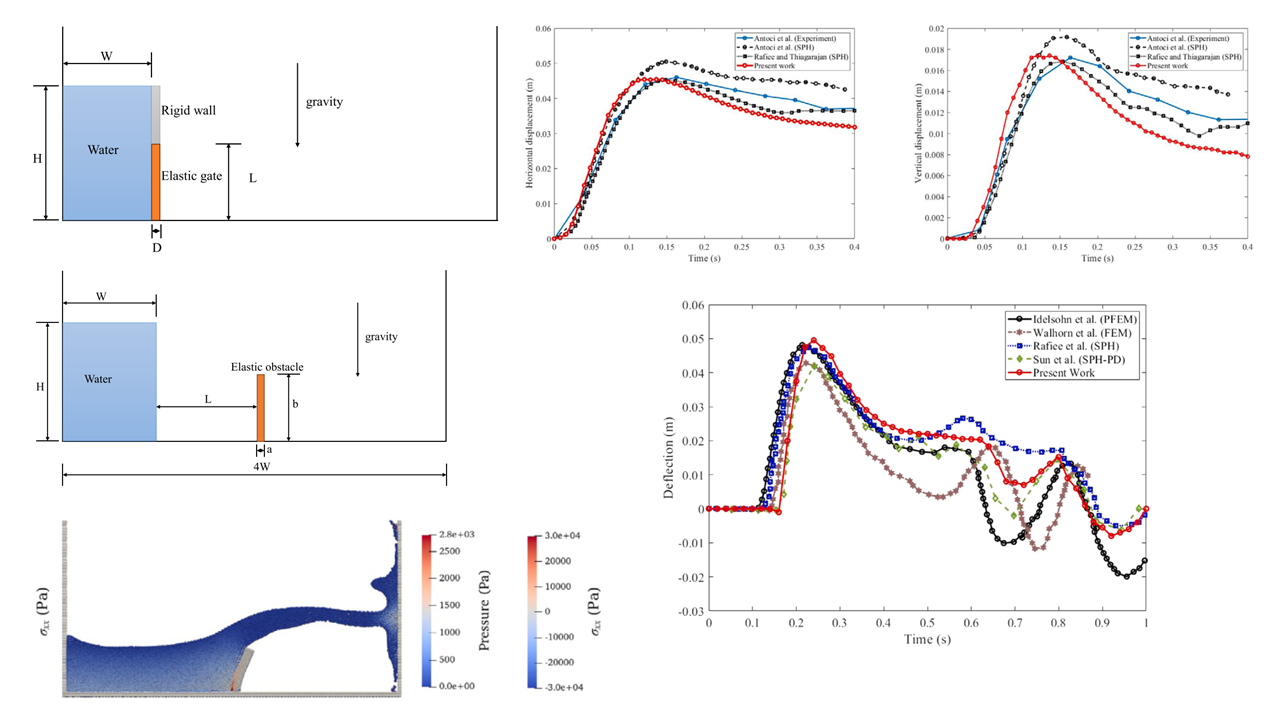This focus area develops a Smoothed Particle Hydrodynamics (SPH)–based computational framework to study crack initiation and propagation in ductile, brittle, and composite materials under high-velocity impact. Cracks evolve using a pseudo-spring analogy that links SPH particles; these springs weaken and break based on damage accumulation, allowing cracks to form and propagate dynamically without artificial enrichment or particle-splitting. The framework effectively captures shear plugging, fragmentation, and conoid fracture patterns in impacted plates, and its predictions show strong agreement with experimental observations.

Figure: Failure in metallic and ceramic plates due to projectile impact
Relevant Papers:
- Islam, M.R.I., Chakraborty, S., Shaw, A. and Reid, S., "A Computational Model for Failure of Ductile Material Under Impact", International Journal of Impact Engineering, 108, 334-347, 2017. (doi)
- Chakraborty, S., Islam, M.R.I., Shaw, A. Ramachandra L.S. and Reid, S.R., "A Computational Framework for Modelling Impact Induced Damage in Ceramic and Ceramic-Metal Composite Structures", Composite Structures, 164, 263-276, 2017. (doi)

